| Hummingbird Banding
Collecting the Data
After the hummingbirds are captured, they are carefully fitted with
tiny aluminum bands (Figure 4) with unique numbers printed on
them. The data collected on each individual bird can then be
tracked to this individual band number. The data is required to be
forwarded to the Bird Banding Office each year by the bander.
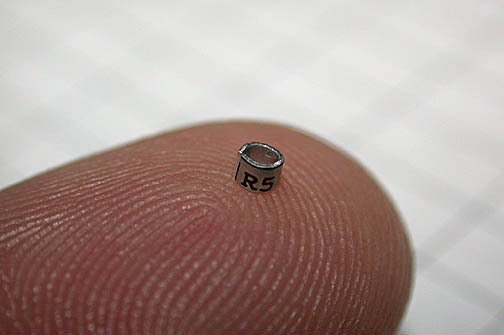
Figure 4. A hummingbird band.
In the field, it is often necessary to set up a mobile
"laboratory" (Figure 5) where data can easily be collected.
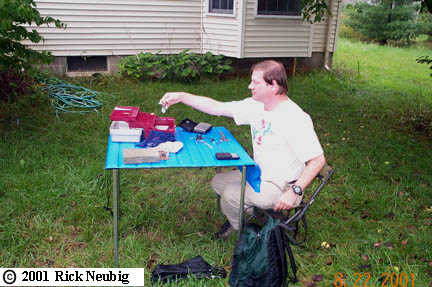
Figure 5. Collecting data in the field.
The basic information that must be collected on any bird banded is
the bird's age and sex, if they can be determined. Luckily, this
is relatively simple to determine in Ruby-throated Hummingbirds compared
to some other species. See Determining Age and Sex below.
Hummingbirds are tiny, but rather sturdy creatures. Every
hummingbird bander must learn a special technique (Figure 6) to handle
them, which is different from the way most birds are handled for
banding. Raptors too require special handling techniques to avoid
injury to the bander!

Figure 6. Proper grip for holding hummingbirds during capture.
To keep the hummingbirds calm during the banding process, they are
placed in a special holding "blanket", which is most often
made from the toe of a nylon stocking (Figure 7)!

Figure 7. Ruby-throated Hummingbird being held for banding and
data collection.
Once the band has been fitted on the hummingbird, using special
pliers (Figure 7a), data collection can begin. Wing length is precisely
measured (Figure 8), which is an important indicator of the sex of the
bird.
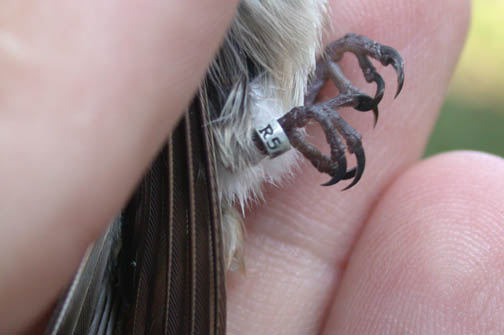
Figure 7a. Bands on hummingbirds are often very difficult to
detect in the field.
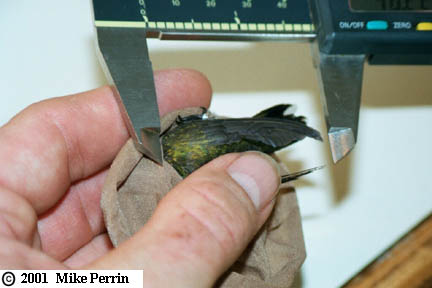
Figure 8. Measuring a hummingbird's wing length.
Another important indicator of a hummingbirds sex is bill
length. This is also carefully and precisely measured (Figure 9).
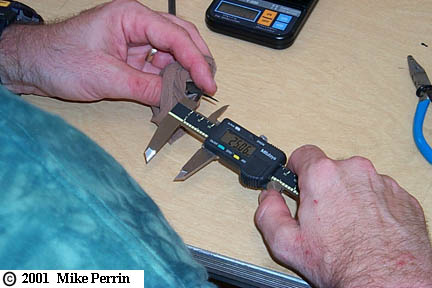
Figure 9. Measuring a hummingbird's bill length.
The length of the tail is quickly measured with a ruler (Figure 10).
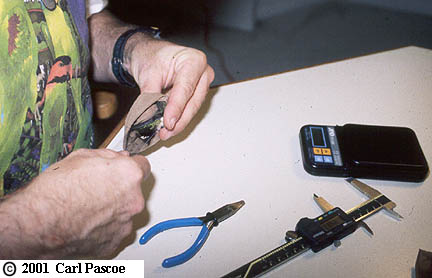
Figure 10. Measuring the tail.
And finally, the weight of the hummingbird is taken (Figure 11). Ruby-throated Hummingbirds weigh between 2.8 and 3.5 grams
during the summer, and can gain an additional 1 to 1.5 grams during
migration! This is quite a weight gain for such a tiny bird, but
is still only between the weight of a penny and that of a nickel!
An assessment of how much fat the bird is carrying is also made at this
point.
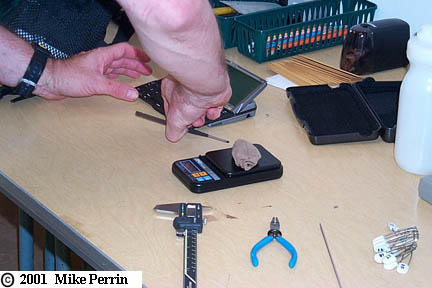
Figure 11. Weighing a hummingbird.
All this data must be recorded. The data for the Michigan
HummerNet is recorded on a small palm-top computer (Figure 12) in the
field, and is then transferred to a desk top computer for back up.
This data is then also entered into a special computer program required
by the Bird Banding Lab.
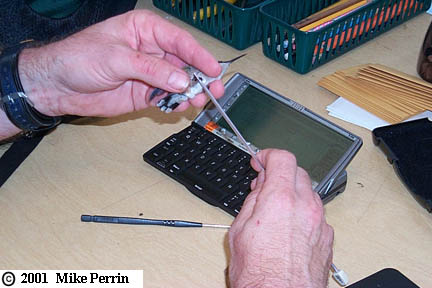
Figure 12. Entering the data.
|